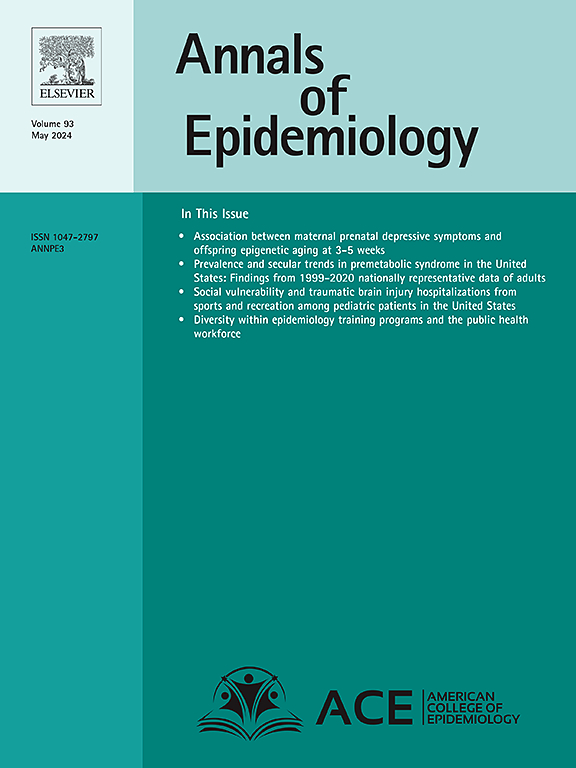Post-COVID shifts and disparities in hypertension-related mortality in the United States
IF 3
3区 医学
Q1 PUBLIC, ENVIRONMENTAL & OCCUPATIONAL HEALTH
引用次数: 0
Abstract
Purpose
This study examines trends in hypertension-related mortality in the U.S. before, during, and after the COVID-19 pandemic, assessing demographic and regional disparities.
Methods
We used CDC WONDER’s Provisional Multiple Cause of Death database (2018–2023) to analyze age-adjusted mortality rates (AAMRs) for hypertension (ICD-10: I10–I15). We calculated percentage changes across three periods: pre-COVID (2018–2019), during COVID (2020–2021), and post-COVID (2022–2023), stratifying by age, sex, race/ethnicity, and region.
Results
Hypertension-related AAMRs increased by 33.4 % from pre- to during COVID (193.5–258.2 per 100,000) and remained 28.1 % above pre-pandemic levels post-COVID. Mortality rose across all demographics, with men experiencing a 34.1 % increase and younger adults (25–44 years) experiencing the highest rise (42.1 %). Hispanic individuals saw the largest increase (49.8 %) but also the sharpest post-pandemic decline (17.8 %). Regional disparities persisted, with the South having the highest increase (37.2 %) and the smallest drop (1.5 %).
Conclusions
Despite a modest decline post-pandemic, hypertension-related mortality remains elevated, with persistent disparities by sex, age, race, and region. Targeted interventions are needed to address hypertension management and reduce mortality in high-risk populations.
美国高血压相关死亡率在covid - 19后的变化和差异
目的:本研究考察了美国在2019冠状病毒病大流行之前、期间和之后高血压相关死亡率的趋势,评估了人口统计学和地区差异。方法使用CDC WONDER临时多原因死亡数据库(2018-2023)分析高血压的年龄调整死亡率(AAMRs) (ICD-10: I10-I15)。我们计算了三个时期的百分比变化:COVID前(2018-2019)、COVID期间(2020-2021)和COVID后(2022-2023),并按年龄、性别、种族/民族和地区分层。结果与高血压相关的AAMRs与疫情前相比增加了33.4% %(193.5 ~ 258.2 / 10万),与疫情后相比仍高出28.1% %。死亡率在所有人口统计数据中都有所上升,其中男性增加34.1% %,年轻人(25-44岁)的增幅最大(42.1% %)。西班牙裔增幅最大(49.8% %),但大流行后降幅也最大(17.8% %)。地区差异仍然存在,南方的涨幅最高(37.2% %),而降幅最小(1.5% %)。结论:尽管大流行后高血压相关死亡率略有下降,但仍居高不下,性别、年龄、种族和地区之间存在持续差异。需要有针对性的干预措施来解决高血压管理问题并降低高危人群的死亡率。
本文章由计算机程序翻译,如有差异,请以英文原文为准。
求助全文
约1分钟内获得全文
求助全文
来源期刊

Annals of Epidemiology
医学-公共卫生、环境卫生与职业卫生
CiteScore
7.40
自引率
1.80%
发文量
207
审稿时长
59 days
期刊介绍:
The journal emphasizes the application of epidemiologic methods to issues that affect the distribution and determinants of human illness in diverse contexts. Its primary focus is on chronic and acute conditions of diverse etiologies and of major importance to clinical medicine, public health, and health care delivery.
 求助内容:
求助内容: 应助结果提醒方式:
应助结果提醒方式:


